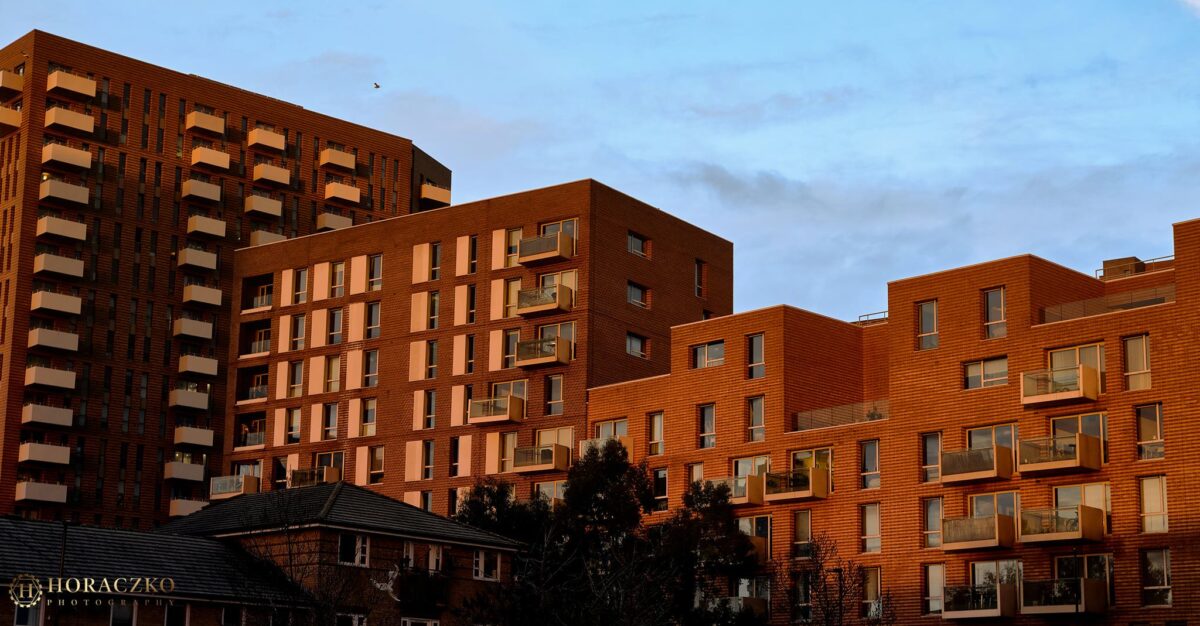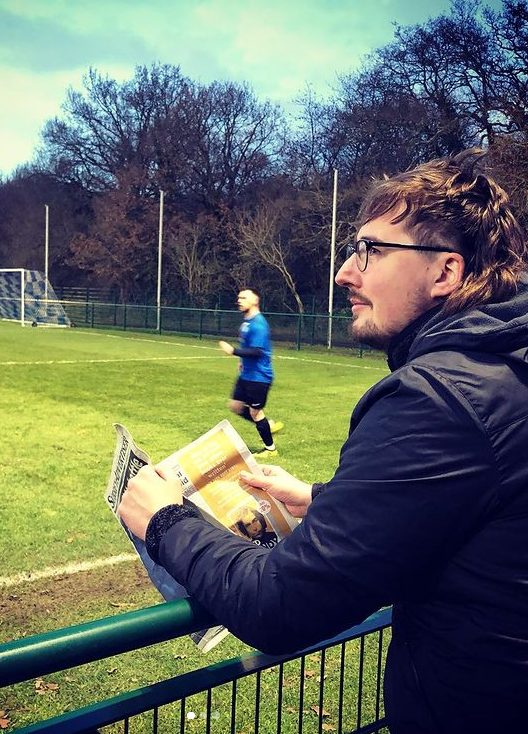In part one of this three part blog contribution we hear from inside the tent to what extent our planning system is truly representative and democratic. Or whether hyper-local Not-In-My-Back-Yard (NIMBY) opposition perpetuates the generational inequality we should all oppose.
It was early in the evening when I realised things were not going as I had planned. You could cut the tension with a knife. I started to tot-up how I thought the votes would go; for, for, against, against, don’t know, I…don’t know.
I swivel my chair to turn away from the public gallery. There’s nothing worse than catching the eye of someone giving you the stare. ‘These people must hate me’, I think to myself, ‘they must think we are faceless droids, nodding through applications without a care in the world’.
But tonight we’re not nodding through an application, we’re on the verge of blocking 63 new homes.
I am sitting in Lewisham Council’s planning committee. On a usual night, I would sit in faint bemusement as colleagues act out a charade — we ask for clarification, we look again at that the cross-sections, we offer apologetic looks to objectors and we firmly ask our officers to make sure all planning conditions are enforced. It is a charade because we know the application is policy compliant before the night begins. The material grounds for refusal may be as flimsy as renters’ rights, but “we’re gathered here tonight” because 5 or more people have complained about an application’s impact on their backyard. After the usual impassioned rant on immaterial considerations or a pained lament to our hands being tied, councillor’s will grant planning permission.
But tonight, is different. This application has not only generated considerable opposition, but the application itself has (potentially) solid grounds for refusal. I can see my colleagues getting tetchy. Objectors have been and gone, and as usual, a scatter-gun approach has been utilised. Locked and loaded, we’ve been pummelled with round after round of complaints: this area can’t take any more homes (it can), this will increase parking pressure (most occupants won’t own a car), this site can’t accommodate this many homes (it can). However, two complaints gain traction.
The development would replace an underutilized plot of land — specifically, a scruffy-looking light industrial estate, and replace it with 63 good quality homes, 20 of which are affordable (14 social, 4 shared-ownership) and a much-needed increase in new business space (an 110% uplift). While it was argued that the application would improve biodiversity across the site, the redevelopment would mean the felling of 38 trees. Moreover, some nearby social housing blocks would experience overlooking from the new flats. At the closest pinch point, the buildings would be 3.8m away from each other, rising to 7.2m away at its furthest. It was acknowledged that for a small number of neighbours, they would no longer be looking out onto trees but at a ‘green wall’ on the side of new flats.
To me, the choice was clear about the actions we needed to take for the greater good. Over the next 20 years, London will need to build a million new homes. It is a steep task, and that will only be made possible if politicians are brave enough to be straight with the public about our need to densify and be able to communicate the trade-offs we all need to make.
It is hard to express in words the pain our housing crisis causes, walk down any street in London and you’ll be surrounded by lives touched by it. Most councillors have seen the worst cases, the homeless families trapped for years in bedsit ‘temporary accommodation’, or the damp-infested, unlicensed HMOs we occasionally investigate. But our housing crisis touches even those who are from the outside, ‘comfortable’ — families with steady employment who know that they’re one Discretionary Housing Payment delay away from losing their home; the key workers who can no longer afford to live near their place of work, and the young professionals locked out of homeownership for life — all are transient, cycling through extortionate and insecure properties, priced out of neighbourhoods they briefly called home, simply existing, in a private rented sector not fit for purpose.
The site of this application was an urban setting, and if London is to densify as needed, we will need to accept properties overlooking each other. While a few flats would have their amenity impacted, were we really going to act for the few and not the many? If we were to block this, how long would site stay underutilised, undeveloped and unviable? Years at least.
And while we heard from the developer who told us about the quality of the design, the urban greening and green wall. And while officers mentioned our housing targets as they authoritatively flicked through their slides. We never heard from those for whom those targets aren’t just numbers, but chance in life, a future. We never do.
I’ve never once had a homeless family attend a planning committee. I sometimes wonder whether any private renter has ever spoken against an application at one of my committees? It takes time to get involved in the planning system, read papers, submit responses and attend the committee. It means we hear from the time-rich.
Our case-by-case discretionary planning system encourages people to get involved in the planning process only when a case directly affects them. The system encourages decisions to be based on a hyper-localised impact assessment, based on feedback from a relatively small number of people whose amenity will be negatively impacted. The system allows councillors to be swayed by localised concerns in the febrile heat of a civic hall. In essence, the system offers the ideal conditions for Not-In-My-Back-Yard (NIMBY) voices to be successful.
For, for, against, against, for..I think.. oh no, they’re going to vote against!
Several councillors are pushing hard on the loss of trees and objectors saw their opportunity. They brought up our climate emergency declaration and opined that these majestic trees — not accessible and at the back of an industrial estate, were essential oxygen masks for the area. The fact that old light industrial units were being replaced by energy-efficient new homes and business space was overlooked. More importantly, the fact that densification near transport hubs (like this site) is an important mechanic in encouraging a model shift to more sustainable transport methods, thus improving air quality and lowering carbon emissions long-term, was overlooked.
Again, the bigger picture was being missed and this isn’t a failure of individual councillors, but something embedded into the design of our planning system.
Another colleague rose up and said he’d vote against. Gulp, that’s another. For, for, against, against, against. He couldn’t let these homes be built due to its impact on the nearby social housing tenants. He’d listened to the homeowners who said they were not speaking for themselves, but on behalf of others, those less fortunate than themselves and who were hit hardest by this development.
16 new social homes were not going to be built because a few existing social tenants would now look at a wall of a block, rather than some trees. Again, this is a product of a system that gives councillors selective feedback. We only hear from those set to lose from any given scheme and never those set to gain.
In the end, I moved to support the officer’s recommendation for approval and the application was granted planning permission via a deciding vote by the Chair. But I was left reeling from what I saw, and my anger would only grow as I read about far larger policy-compliant schemes, being blocked by councillors across London.
In writing this piece, I hope to show how and why applications that comply with a local plan can be rejected by your local councillors. I hope to give people an insight into how our planning system’s much-vaunted democracy, tilts the system unfairly towards the well-to-do and perpetuates generational inequality. Despite facing huge housing pressure, we face a system that provides fertile ground for hyper-local opposition to block developments.
When drafting our local plan, comments from my colleagues often take a broader view, looking at the needs of our borough as a whole. The need for economic growth, densification and regeneration, and the need to tackle housing need and combat gentrification by building more is accepted. These things are then balanced and traded off against ensuring good design, protecting unique heritage, and ensuring manageable density for the area’s infrastructure.
Moving away from our ‘one-shot’ approach to planning engagement is good for democracy. By ‘front-loading’ or ‘up-streaming’ planning consultations, we can help achieve a more representative and democratic planning process. Less time-rich demographics can provide feedback at a single point when it is necessary. All in all, it will mean that planners and politicians will get a more holistic view when drafting their local plans, in an environment that offers them the space to see the bigger picture.
Moreover, the proposed move to a rules-based planning system and away from a discretion-based system is positive. It will mean evenings like I’ve described above, will become a thing of the past.
Defenders of the status quo remind us that almost 9 in 10 residential planning applications are granted permission at committee-stage. However, this is a form of survivorship bias, ignoring the countless applications for new homes that were never submitted because the risks of being rejected by planning officer or councillors are too great. The issues in our symptom run far deeper than those outlined here. In fact, councillors directly blocking new homes is only the tip of the iceberg.

